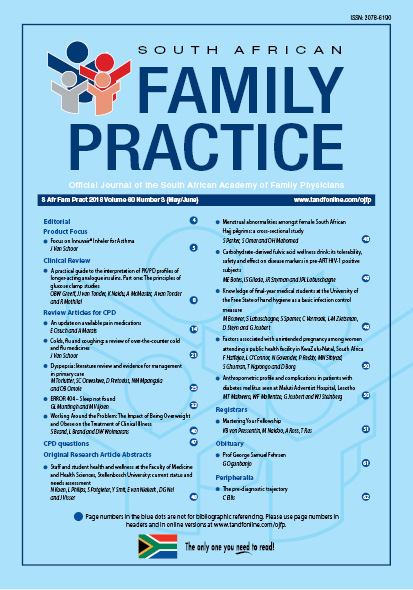A practical guide to the interpretation of PK/PD profiles of longer-acting analogue insulins. Part one: The principles of glucose clamp studies
Keywords:
analogue insulins, glucose clamp, time–action profile, glucose infusion rate, pharmacokinetics
Abstract
Glucose clamp studies are used to determine pharmacokinetics (PK) and pharmacodynamics (PD) of analogue insulins. With the development of longer-acting basal analogue insulins, including glargine 300 (Gla-300) and insulin degludec (IDeg), results from numerous glucose clamp studies are readily available. However, interpreting PK/PD profiles in a scientifically sound manner can be a challenging feat. This is the first in a series of publications that will suggest practical tips for interpreting and comparing results from glucose clamp studies. Variations in the glucose clamp methodology, duration of clamp studies and glucose clamp targets influence the study design and results significantly. Selection of study populations, including healthy patients or patients with Type 1 or 2 diabetes mellitus, has important implications. The dose of study insulin should reflect that of the general treatment population, and ideally steady-state conditions should be used. During the study the plasma insulin concentration and glucose infusion rate describe the pharmacokinetics and pharmacodynamics of the study insulin. With these practical tips in mind, results of glucose clamp studies can be interpreted in a scientifically correct manner. The next article in this series will discuss the interpretation of PK/PD profiles using two newly developed longer-acting basal analogue insulins: Gla-300 and IDeg.
Section
Review Articles
By submitting manuscripts to SAFP, authors of original articles are assigning copyright to the South African Academy of Family Physicians. Copyright of review articles are assigned to the Publisher, Medpharm Publications (Pty) Ltd, unless otherwise specified. Authors may use their own work after publication without written permission, provided they acknowledge the original source. Individuals and academic institutions may freely copy and distribute articles published in SAFP for educational and research purposes without obtaining permission.

